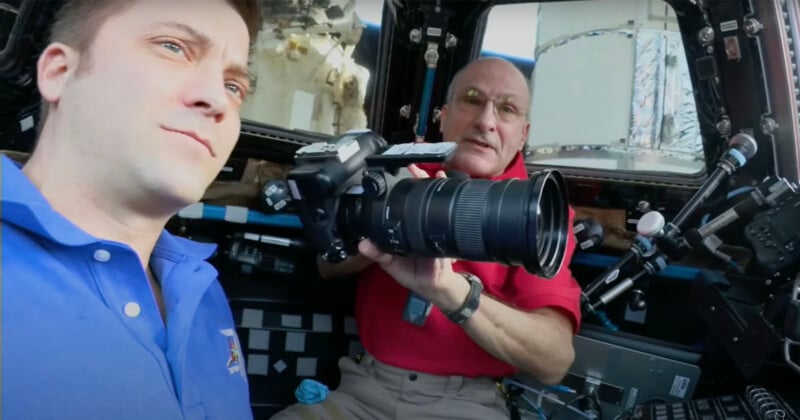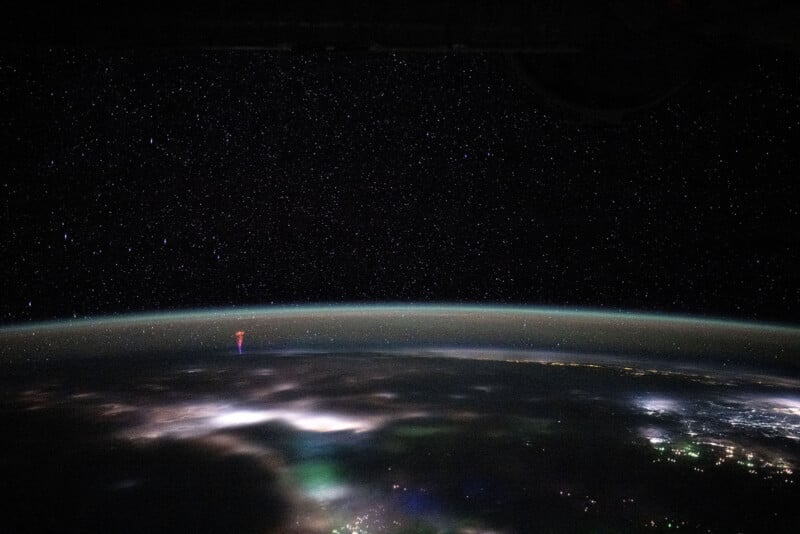Watch ISS Astronauts Geek Out About Photography in Space

Don Pettit and Matthew Dominick are arguably the two greatest photographers to ever go to space and the pair were interviewed together while onboard the International Space Station (ISS).
Pettit and Dominick spoke to Destin Sandlin from SmarterEveryDay about all things photography. It’s well worth a watch as the duo talk about what it’s like shooting photos from space.
The interview was conducted in the space station’s Cupola; a six-foot wide, six-sided module that has a direct nadir for shooting photos of Earth or celestial objects.
During the interview, the pair bring out the Nikon Z9s they use with different lenses attached for different requirements. For example, Pettit shows a “daytime lens” that is “fairly slow” with an aperture of f/4.5.
But for nighttime imagery, Pettit explains they use faster lenses such as a 24mm f/1.4 and a 50mm f/1.2 which he says “really sucks in the light” allowing them to shoot photos at night.
Shooting Photos in Zero-G
However having the gear is one thing, shooting photos in zero-gravity is another. Dominick explains that there are handrails and footholds to hold his body in place freeing up his hands to shoot photos. He even has “ninja” socks that grip things to help him stabilize while taking pictures.
Dominick says that when shooting from the Cupola, the Earth is moving by so quickly (the ISS travels at 17,500 miles per hour) that he has to pick a fast shutter speed or he will sometimes “hand track” the Earth as it goes by to reduce motion blur.
Even a fast shutter speed like 1/300 will still get motion blur because the ISS is moving so fast, which is where the hand-tracking method comes in.
“When you’re doing that, you’re stabilizing on the Earth by looking through the viewfinder,” says Dominick. “You can see the Earth and you look to keep the center of the crosshairs of the camera on the same spot of Earth.”
The Quest to Shoot a Red Sprite From Directly Above
One of the more notable objects Dominick has been shooting during his time on the ISS has been red sprites, large-scale electrical discharges that shoot upward from thunderstorm clouds that are red in color.

Petit praised Dominick’s skill in capturing the red sprite but says what he really wants is to get a “nadir” view looking straight down on a sprite.
“Both Matthew and I have been shooting nadir with a 200mm telephoto lens to try and catch a straight-down nadir view of a sprite,” says Pettit.
However, capturing sprites isn’t easy as they are impossible to anticipate. It requires near-constant shooting such as timelapse mode or video recording.
Pettit says he’s shot roughly 50,000 pictures of the top of clouds in a bid to capture this view of a sprite. “One of these times we’re gonna catch a nadir view of a sprite,” he adds.